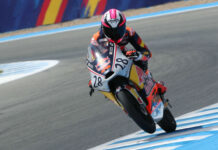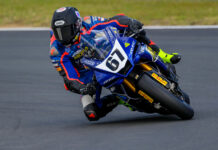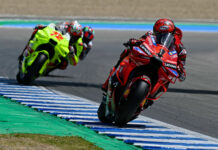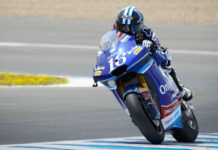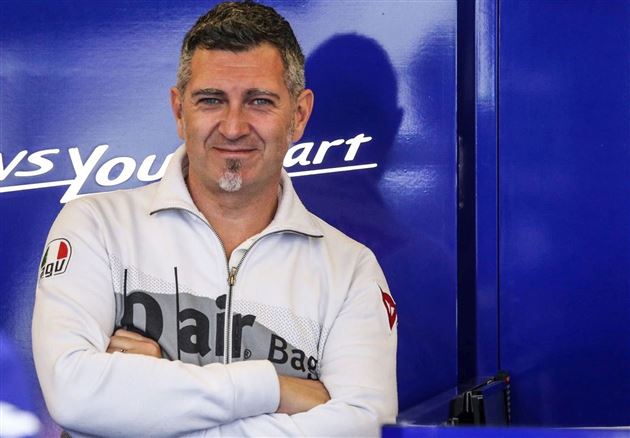In the middle of 2016, FIM announced that it was beginning a series of meetings with helmet manufacturers to develop a new certification standard for motorcycle helmets that went beyond existing standards such as Europe’s UN ECE 22.05, America’s Snell M2015, and Japan’s JIS T8133.
The initiative was labeled the FIM Racing Homologation Programme for helmets (FRHPhe) and the stated goals were to not only improve protection for riders but to also provide more objective evaluation of the performance of helmets used in racing.
“We were aware that in this environment, in the pinnacle of racing, there were products that were not at a certain level in terms of safety,” FIM Sports Director Fabio Muner said in an interview conducted by Roadracing World Racing Editor Chris Ulrich. “That is what interested the FIM.”
In 2017, FIM announced that it had finalized the testing procedures to be used in FRHPhe, including a new procedure to measure helmets’ response to medium severity oblique impacts that result in rotation forces affecting a helmet and rider’s head, something that did not existing in any other helmet certification testing.
“Together with the industry we worked one year and a half in order to fix the standards in order to achieve a different level of safety and protection for the athletes and the riders,” said Muner. “So we introduced the penetration, the impact standards, also the rotational impact – something that is not yet [required] from the other European or American or Japanese homologation process.”

(Above) FIM’s new oblique helmet drop test to measure rotational forces.
In 2017, it was also announced that any helmets to be used in a FIM World Championship road race starting in 2019 would need to be homologated under the new FIM standard.
The helmet homologation process is not like the homologation process of motorcycles used in production-based racing. Helmet manufacturers do not have to produce a certain number of helmets to sell to the public and a professional racer in the World Championship does not have to use a helmet based upon the design of a production model.
Manufacturers can submit off-the-shelf production models for homologation but they can also submit any special helmets they may produce exclusively for their top professional racers to wear.
Either way in order to receive FIM homologation a helmet has to be tested exactly how it will be worn by the racers. This means that if Jorge Lorenzo uses extra spoilers and aerodynamic devices on his Shark helmet, then Shark must submit Lorenzo’s helmet with all of those devices in place during homologation testing.
“We test the products with the final configuration,” said Muner. “You know that there are spoilers, not only Shark but AGV has spoilers behind. So we test the helmets, and it is a very detailed list of all the accessories that they want to homologate with it, with the rotational impact and the standard impact. They are evaluated with all the accessories put on the helmet. If they want to change a spoiler or some parts, the external parts of the shell for example, they have to retest it.
“Frankly, this was one of my doubts in the beginning because in racing a lot of brands use special and custom products to have the maximum performance in aerodynamics or comfort or stability of the helmet on the head on the straights. So we asked to test the product in all the different configurations they want [to use] in order to be safe, so the helmet is not just stable at high speed but also in the case of the crash all the pieces detach or they don’t create any particular problem. And we achieved this solution.
“There are different approaches to achieve the same performance. The importance from our side is that they achieve a certain level of energy reduction and absorption and [they do so] without creating a spine problems due to the rotation impact, etc. That was not present in the previous test [certifications]. So I think that we move and raise the bar of safety in the helmet for racing, and this was the first big project and that kind of approach that FIM has, but it’s just the beginning. Because after the full-face for road racing helmets we will move to off-road and trails. We want to really raise the bar for the safety of our athletes.”
Since the rollout of FRHPhe there have been some rumblings in the helmet industry that the new program is simply a money grab, that FIM’s primary goal is to increase its revenue by requiring this new helmet certification, which has fees associated with it. But Muner says this could not be further from the truth.
“Money is surely not the focus,” said Muner. “The focus is to have product that deserves to be in the MotoGP, Moto2, Moto3 World Championship.”


